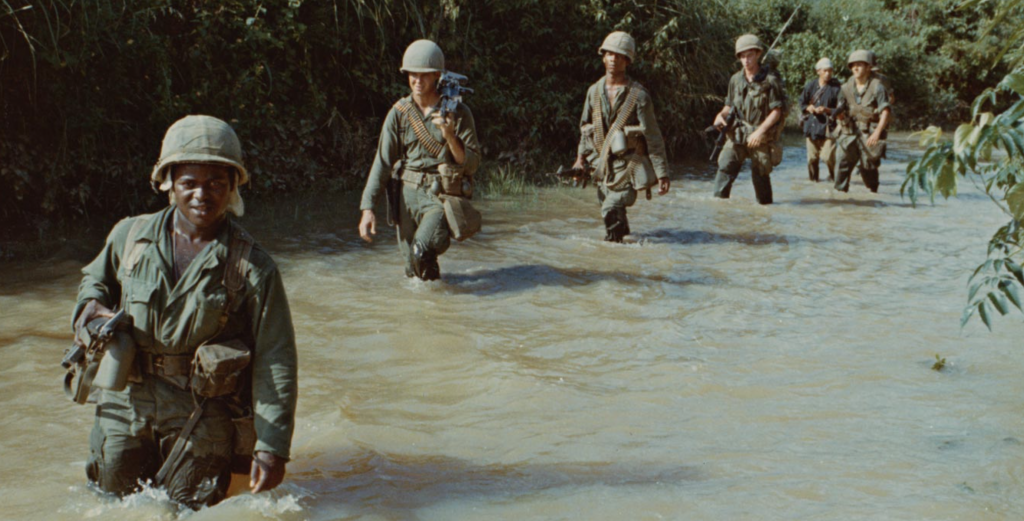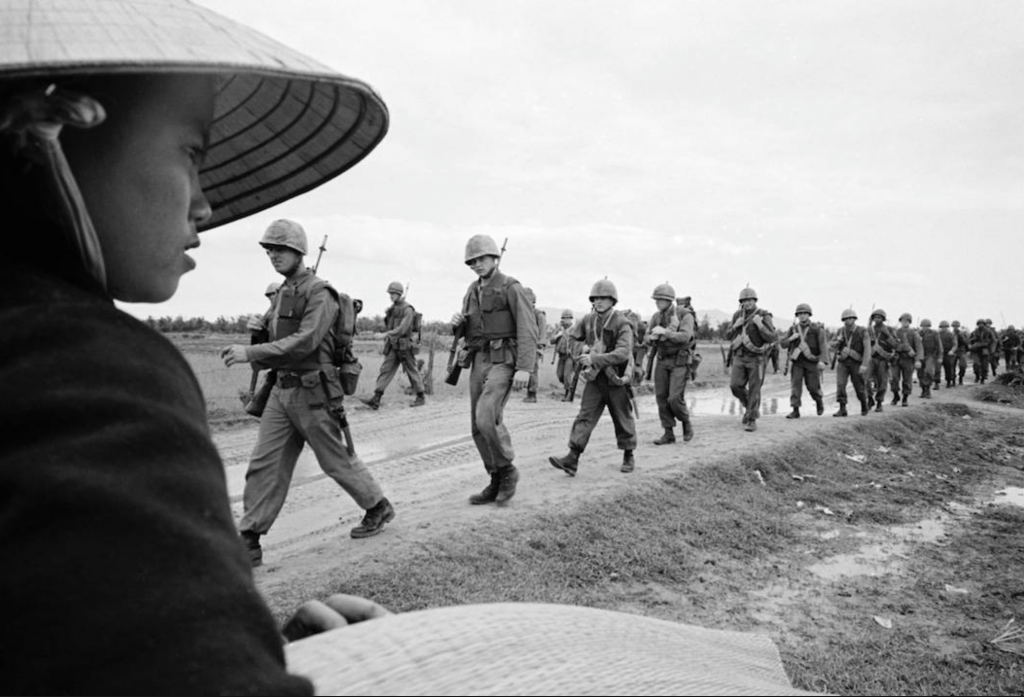Culture
‘The Vietnam War’ Premieres Same Week as ‘Wall That Heals’ Visits Athens
By: Emily Votaw
Posted on:
Over 58,000 Americans in uniform perished over the duration of the Vietnam War. The years of America’s involvement as a chief combatant in the conflict were some of the most divisive in the country’s history – drawing a variety of political and generational lines within the American public.
September 17 will mark the premiere of lauded documentarians Ken Burns and Lynn Novick’s The Vietnam War, a sprawling 10-part contemplation on the decade that defined modern America, on WOUB-HD. During that very same week – starting on Thursday, September 14, “The Wall That Heals,” the half-scale replica of the Vietnam Veterans Memorial unveiled by the Vietnam Veterans Memorial Fund in 1996, will be anchored at Ohio University’s Bicentennial Park through Sunday, September 17.

Jerry Sullivan of Buchtel is one of many local Vietnam War veterans.
“I beat the draft and I enlisted in the airborne infantry – it’s something that the Scotch-Irish have a long history of doing here in Appalachia,” said Sullivan on a windy afternoon outside of Fluff Bakery in Athens. “Scotch-Irish people are militaristic – they come from such a place where men with large swords went forth and slew the dragon. My predecessors in other generations had fought in previous wars, and I wanted to see what that was about – I wanted to be a witness to history.”
Sullivan would go on to be a purple heart recipient, wounded in the spring of 1969 and subsequently honorably discharged.
“There was a very high degree of involvement in the war out of most of Appalachian Ohio – the war affected everybody, and the draft affected just about everybody,” said Sullivan. “A lot of people got a medical deferment or went to college to avoid the draft – I quit college after about a year. It was after my brother-in-law had been killed over there, and I enlisted with the curiosity of a youthful, innocent young man.”
The Vietnam War left a series of impressions on Southeastern Ohio, and especially on Athens.
“(Athens) was a very excited place during the War. The streets were animated and sometimes violent. A lot of social duress was being expressed in different ways,” said Sullivan. “It was not like an innocent small town – Athens brought people in from all over the country, and many of them were involved with the war, having either been a part of it, like myself, or protesting it.”
Ohio University ended their spring quarter early in 1970 when riots broke out on campus after four students only three hours’ drive north at Kent State University were killed by the Ohio National Guard. Unrest reached a peak at this time, not that students and residents of Athens were not impacted by the conflict leading up to that period and after it.
“There was a very high degree of involvement in the war out of most of Appalachian Ohio – the war affected everybody, and the draft affected just about everybody. A lot of people got a medical deferment or went to college to avoid the draft – I quit college after about a year. It was after my brother-in-law had been killed over there, and I enlisted with the curiosity of a youthful, innocent young man.” – Jerry Sullivan, local Vietnam War veteran
Maya Ying Lin, the daughter of Henry Hau Lin, the former dean of Ohio University’s College of Fine Arts, is the architect whose design was ultimately chosen as the winner of a public design competition for the Vietnam Veterans Memorial in 1981. Her vision – a black cut-stone masonry wall with the names of 57,661 fallen American troops engraved on it, was chosen out of 1,441 other submissions and completed in October 1982.
“It took a while to get political support for Maya Lin’s concept. it got a lot of pushback because there was this sense that it was kind of an embodiment of American guilt, it was not uplifting,” said Ingo Trauschweizer, an associate professor of history at Ohio University who specializes in strategy and policy in war, as well as the cultural impact of war. “It was something that created a split in the veteran community. Maya Lin must have considered the power of using black granite in the monument, and some people couldn’t see past that. And there was certainly a degree of racism going on because she is a Chinese American, and it had only been a little less than a decade since the war when the monument was created – there were a lot of sentiments and emotions that were still pretty raw.”

The Vietnam Veterans Memorial does stand out on the National Mall amid more traditional monuments that convey heroism and valor with more conventional architectural and artistic decisions.
“(The memorial) doesn’t have any depictions of any figures, composite, representative, anything – just the names of the people who served,” said Chester Pach, an associate professor of history at Ohio University. Pach instructs a number of classes on foreign policy, and has written extensively on the Vietnam War for the New York Times and in a number of academic journals. “I suppose having each name on the monument was a controversial way to include everyone who served and those who died in the course of their service. The last time I was at the wall was 10 weeks ago, in June, and I found a name of a person I knew who had died in the war; and anyone can do that, and its highly moving experience and has been for many people.”
There is a large veteran community in Athens; made up of those who served in a variety of conflicts in which America was involved. September 14-17 will mark the very first time that the replica wall has been in the area.
“We had a smaller version of the (Vietnam Veterans Memorial) Wall in the Baker Ballroom in 2011, so we were looking to bring it back to Athens because of the great turn out we had then. We submitted an application to bring it and it was accepted,” said Brian Heilmeier, the senior assistant director of student activities at Ohio University, who helped bring the Wall that Heals to Athens. “I hope that students can stop by to see the wall and feel what it represents. There are 76 names on the wall from the local area and I know that many of our students have loved ones on the wall.”
Pach said that he feels that, as with all things, people will experience the Wall that Heals in very nuanced, different ways.
“For some people, Vietnam connects directly with their experience – it is a highly personal matter. For some, it will take them back to times that were difficult and traumatic – back to the specific emotions of the things they endured, of their memories,” said Pach. “It will be different for someone younger, who was born years after American involvement in the war. It will be their chance to learn about the war; why it occurred, why it lasted so long, and why it was so hard to end. Like anything, the Vietnam War had critics and supporters who all felt the way they did for highly variable reasons – to just say that some people were for and against the war is highly reductionist.”
Sullivan expressed that he will be one of the regional veterans to visit the travelling monument on campus.
“I’m happy to still be here for this one. We’ve certainly lost some folks along the way. There is still a substantial Vietnam veteran community in the area, and I hope that we will all be able to take some good feeling from it,” he said. “Hopefully it will be healing. There are a lot of guys who are still deeply affected by what they experienced – and others have gone on with their lives.”

